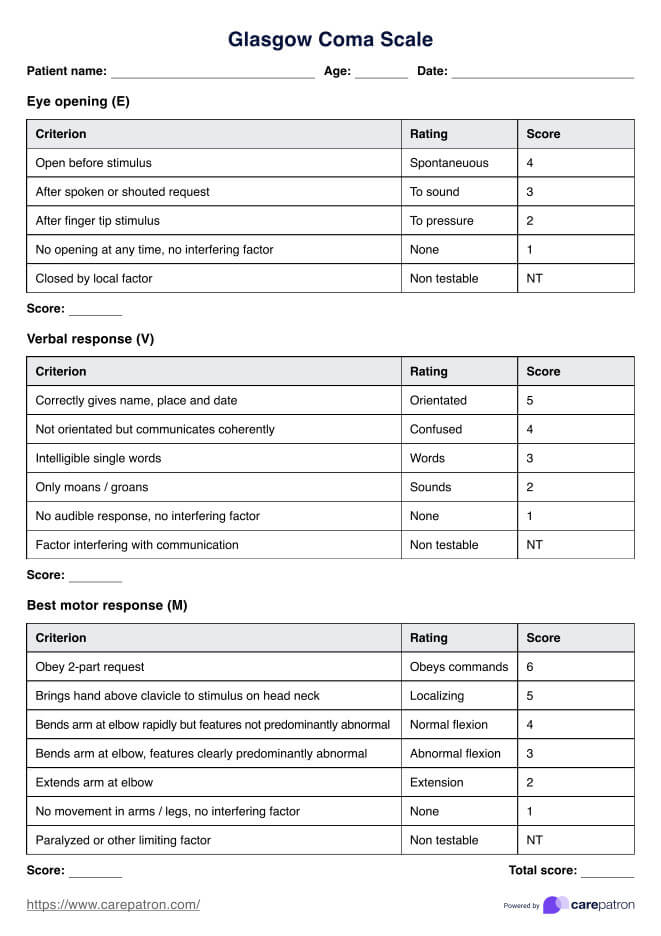The Glasgow Coma Scale (GCS) is a clinical tool used to assess a patient’s level of consciousness after a head injury. It evaluates three responses—eye opening, verbal response, and motor response—each scored separately and summed for a total score between 3 and 15. Higher scores indicate better neurological function, while lower scores suggest more severe impairment.

Glasgow Coma Scale
Access a free Glasgow Coma Scale Template for a structured assessment of consciousness and neurological function in patients.
Glasgow Coma Scale Template
Commonly asked questions
A GCS score of 3 is the lowest possible score, reflecting no eye opening, no verbal response, and no motor response. However, a GCS of 3 does not automatically mean brain death; it only indicates deep coma or unresponsiveness. Brain death requires additional confirmatory tests, such as absent brainstem reflexes and lack of spontaneous breathing.
A GCS score of 14 is considered near normal, typically indicating mild confusion or disorientation. It may occur after minor head trauma or transient medical conditions, but generally reflects preserved neurological function. Continuous monitoring is recommended to ensure the score does not decline, signaling worsening brain injury.
EHR and practice management software
Get started for free
*No credit card required
Free
$0/usd
Unlimited clients
Telehealth
1GB of storage
Client portal text
Automated billing and online payments











